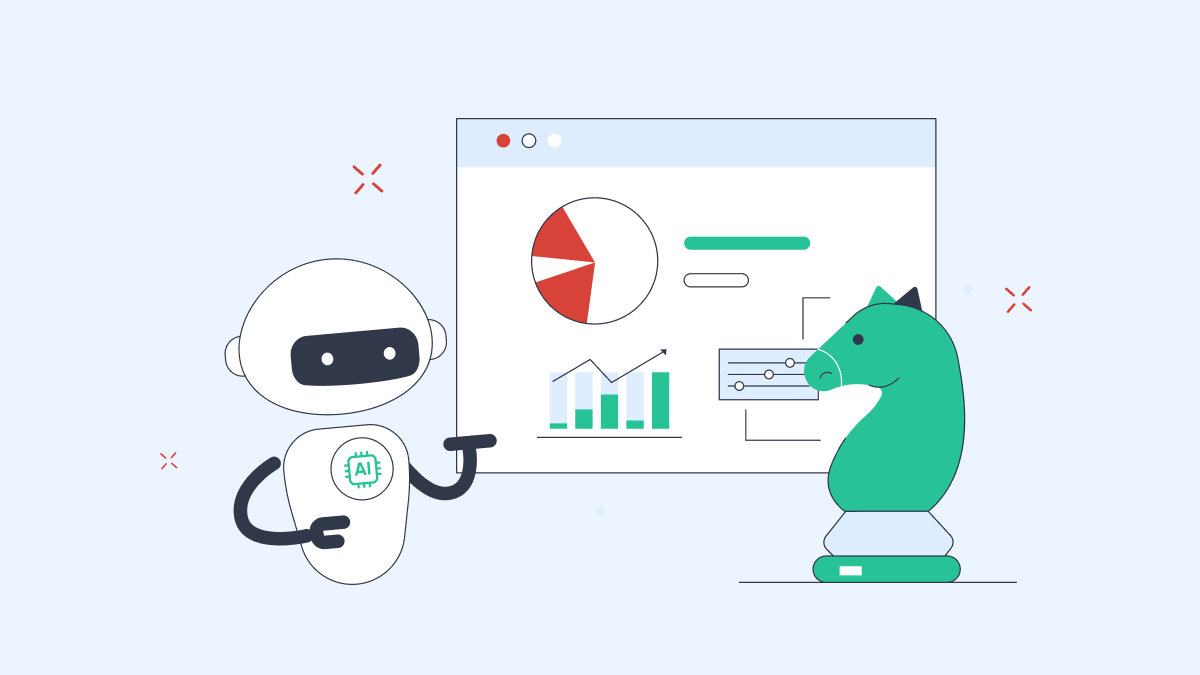.png)
AI Isn’t Strategy — But It Should Back Yours
AI won’t replace strategy, but it will amplify it. Use AI to scale what already works — faster, cheaper, and more precisely.
.svg)

AI won’t fix your business model. It won’t replace product-market fit. It won’t invent a customer you don’t already have.
And yet, in 2025, it’s hard to separate a good strategy from a good AI stack.
Because the companies that are pulling ahead aren’t the ones chasing every new tool. They’re the ones using AI to amplify what already works. Not as a gimmick. As a multiplier.
AI Doesn’t Give You Direction — It Gives You Speed
Think of AI like a high-performance engine. If you know where you’re going, it gets you there faster. If you don’t, it just takes you to the wrong place more efficiently.
That’s the paradox. AI makes bad strategies worse — but it makes great ones unbeatable.
A restaurant that already knows its guest journey can use AI to compress service time, drive repeat visits, and recover unhappy customers in minutes. A multi-location business that’s already operationally sound can use AI to unlock another layer of margin across hundreds of sites. A company with a clear GTM plan can use AI to automate onboarding, optimize campaigns, and double the output of its marketing team.
But the strategy comes first.
The AI Arms Race Isn’t About Features — It’s About Focus
A few years ago, the pitch was, “We have AI.”
Now it’s, “Our AI is tuned to your business, your language, your data model.”
The best AI companies today aren’t building general-purpose tools. They’re embedding themselves in specific workflows — scheduling, routing, hiring, responding, calculating — and disappearing into the fabric of work.
That’s why vertical AI is rising fast. Not because it’s fancier. Because it understands context. And context is what lets strategy stay in control.
Where AI Supports Real Strategy
- In operations, AI reduces noise — and lets you focus on exceptions, not every ticket
- In marketing, AI accelerates content and campaign cycles without losing tone or timing
- In finance, AI finds anomalies and forecasts trends before they show up in spreadsheets
- In customer experience, AI resolves issues at speed and scale — and flags what still needs a human touch
These aren’t shortcuts. They’re amplifiers. They allow smart teams to spend time on judgment, not grunt work.
What Great Leaders Are Asking
Smart executives aren’t asking, “Do we need AI?” They’re asking:
- Where does AI create leverage for our strategy?
- Which decisions are we still making manually that could be automated with confidence?
- How do we scale what’s working without bloating the team or the tech stack?
The best leaders know AI won’t give them their plan. But it’ll help them deliver on it — faster, cheaper, and with more precision than ever before.
If You Don’t Direct It, It’ll Distract You
AI without strategy is expensive noise. It leads to dashboards no one checks, automation that no one trusts, and systems that solve problems no one had.
But AI with strategy? That’s what creates the kind of operational advantage competitors can’t copy overnight. It’s not just what you automate. It’s why. And the best AI-powered businesses in 2025 are the ones that remember this:
AI isn’t your vision. It’s your velocity.
Join Over 20,000 Locations Worldwide
See how Momos helps winning companies drive revenue and manage customer experience across 600+ brands globally.


.webp)